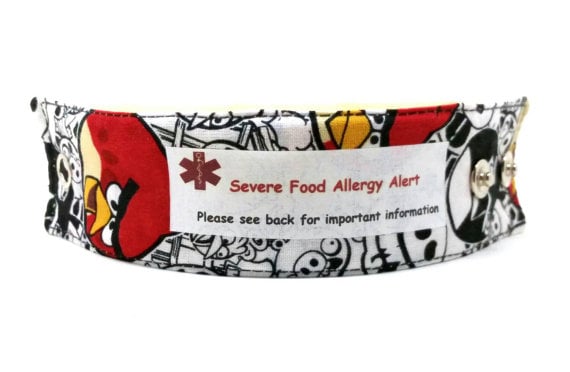With the recent release of the film San Andreas, starring The Rock, flooding in Texas, and other disasters around the world, disaster preparedness has once again moved to the forefront of the minds of many parents. When you are the parent of a child with a food allergy, you have additional obstacles and things to consider when trying to be prepared. There could be circumstances where you’re required to shelter-in-place in your home for an extended period of time, or even go to a public shelter. In the event of either of these scenarios the best thing you can do is be prepared, and prepare your family for what may happen. This preparedness and training can be really beneficial for your children whether it’s a major disaster or a small house fire.
The first step to getting ready for any sort of disaster or emergency situation is creating a family plan. In addition, depending upon the age of your child and the size of your family, you’re going to have to make adjustments to your plan. For example, if you have an infant your child isn’t going to be able to do much for themselves, and if you have an older child they may be able to help out more. Additionally, you have to keep in mind that your child and you may not be in the same place during a disaster, so you have to figure out how you will reach each other and meet.
- Decide on a location of where to meet in your home if there is a disaster
- Practice emergency drills for if there’s a disaster in your home
- Fill out a Family Communication Plan for your child and put it in their go-bag, make sure they know and understand the plan (depending on their age). Be sure to fill this out together and talk through this plan together.
- Talk to your child about the disaster plan if they are at school or day care
Connect with your child’s school or daycare
If your child is at school you’re going to want to 1) talk to the school about their emergency plans, and 2) figure out what supplies and emergency kit you’re going to leave for your child at school. I think it’s critical to explain to your child what will happen and where you will be during this time.
Things to consider about your child’s daycare or school:
- Do they store water and food?
- Do teachers have first aid and CPR training?
- Can children leave and store their own emergency kits?
- What is the plan if the class doesn’t shelter-in-place and they have to go somewhere else?
When you’re packing an emergency kit for your child at daycare and school, here are some things I would consider:
- A comfort item like a teddy bear or toy that makes them feel secure
- A folder containing medical information, family contact info, and any other contact numbers
- A change of clothes
- A supply of medications – both prescription and over-the-counter
- A family photo including a note from parents or recorded message
- An emergency whistle
- A water bottle with water emergency pouches
- A small flashlight
- Basic first aid supplies
- Epi-Pen/Auvi-Q and carrying case
- Snacks appropriate to their diet
- Handwipes
- An emergency ID card – in addition to their allergy bracelet. These ones come in a variety of patterns and styles and you can include your contact information on the back.
Your Home Emergency Kit
It’s important to have a home emergency kit stocked with everything your family could need. I highly suggest having extra food for your child with food allergies. During a stressful situation, you don’t want to be forced to introduce new foods, so pack long-term emergency food and extra of it. Don’t forget to re-stock and check your home emergency kit regularly.
Here are some suggestions of item’s for your home emergency kit:
- Water for each person in the house-hold (enough for drinking and cleaning)
- A first aid kit
- Contact information for relatives, hospitals and emergency shelters
- Medical information on everyone in the family
- A detailed allergy plan
- Food supplies suitable for your child with food allergies
- Prescription and over the counter medications
- Flashlights
- Extra batteries for all devices
- Emergency blankets
- Maps of your local area
- Copies of any personal documents including birth certificates, insurance and passports
- Sanitation and personal hygiene items
- A battery-powered radio
- Extra cash
- Pet supplies
- Games and activities for children
One easy thing is to
Suggestions for foods to have on hand
You’re going to need food that is not perishable and can store for a longer term that works for your child, here are some suggestions:
- Soy, Almond, Coconut Milk and other non-dairy milks that don’t need refridgeration
- Peanut-Free nut butters like SunButter
- PackIt Gourmet has both dairy-free and gluten free meals that can be used in long term storage.
- Mountain House has a variety of dehydrated gluten free meals
- Some of the Paleo Meals to Go may work for your child
Your child’s home bug-out bag
In addition to having an emergency kit for your house your child should have a home bug out kit in the form of a backpack or easy carrying case. You’ll want to check bags on a regular basis to make sure everything in them is re-stocked and up to date. Things to include here are:
- Re-usable water bottle
- Change of clothes
- Comfortable shoes and socks
- Medications
- Family contact information and emergency numbers
- Toiletries
- An emergency blanket
- Small snacks
- Emergency whistle
- Hand sanitizers
- Band aids and wipes
You can also pick up a
like the one below and then add additional items that your child may need.







